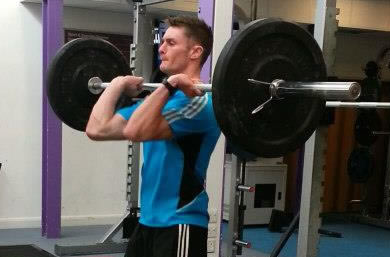The Basics of Interval Training

There are various training methods for what is known as aerobic activity, many research studies have looked at elite performance in different sports, the best way to improve body composition (burn fat/weight loss) and improve a variety of health markers (heart conditions, lung function and blood chemistries to name a few). There are so many different methods to list so I won't! But I will give you an insight in choosing the most applicable and effective method for you.
I have done some scientific research myself involving two types of interval training, looking at their physiological effects and application to sporting performance so I have seen first-hand the extreme physiological enhancements that come with interval training (as well as my clients and athletes having great results from it).
Now I have mentioned interval training I will explain a little bit more about it. The method I will be speaking of is known as HIIT (High Intensity Interval Training) it is where you use high intensity intervals of maximal or near maximal efforts for a short period of time with a scheduled active recovery or lower intensity interval. The beauty of interval training is that it is easily adaptable, duration, recovery, frequency and intensity of the intervals can all be adapted to suit each individual. HIIT is more effective, more time efficient and a lot less boring to do than conventional what's known as continuous activity or exercise, you don't need to slog out a 2-3 hour jog or bike ride it breaks down time barriers for busy people to achieve it.
The best method I have used myself and that is best supported by a wealth of scientific literature is 30 second maximal cycling sprints. Now, I know for a fact that the method used in the literature is going to be impossible for 99% of the people who will read this to replicate as a special type of bike with a precise amount of resistance was used to conduct all tests. However, the principle still remains the same, 30 seconds of maximal effort with between 2.5 to 4 minutes recovery. If you are able to find a resistance on what you use whether its gym bikes, spin bikes or turbo trainers etc. where the last 8-10 seconds feel like you are cycling through syrup then that will be a close representation of the level of resistance we are looking for.
In a very simple way of describing how this type of training works there are three types of energy systems that the body has and the intensity of this type of training fully exploits them all. The initial system (ATP/PCr) we use for maximal efforts is exhausted within 10 seconds leaving 20 seconds still to go. This is where we shift to our next system (anaerobic glycolysis) which cannot keep up with the demand of the exercise because the metabolic state of the muscles and it's cells needs oxygen which then brings in our final energy system (the aerobic system). The aerobic system is severely stressed now trying to create power as this system is very slow at turning over energy to supply the demand. **It is important to note that all our energy systems are working 100% of the time we just have a predominant one for what type of activity we are doing.**
The maximal effort means that you are recruiting far more muscles than if you went for a leisurely jog or walk near to 50% more in fact. This has an effect on your muscle's glycogen stores that causes the muscles to absorb and store more fuels (carbs and fats) which is taken from your bloodstream which may be stored as fat elsewhere in a less desirable location e.g. internal organs, blood vessel walls etc.
So there we have the science for the activity here's the science for the recovery. The 2.5-4 minute active recovery used in the literature has been used because 2.5 minutes has been shown to be the minimum time for the initial energy system (ATP/PCr system) to fully replenish so a maximal effort can be achieved for the successive interval. I used 4 minutes in my studies as I was looking for sporting performance but if you are not looking for maximal power more for general fitness then 2.5 minute recovery will place a greater fatigue as you won't recover to the same physiological state (this is if you can achieve the desired maximal resistance for the intervals).
To train this way I would recommend 2-3 times a week depending on your health, how often you train and what other types of training you do. Begin with 3 intervals for week 1 then increase by 1 interval each week up to 8 intervals then have a rest week. After this training you should feel 100% better and fitter than when you did to begin with.
**Please note if you have any physical conditions that are affected by strenuous exercise check with your GP before undertaking this type of exercise**
People often think that to lose weight you have to burn all of the calories that you intake and that 15-20 minutes isn't going to burn many calories and they're right to some extent. BUT and it's a big BUT it is not the exercise itself that causes weight loss it is the physiological adaptations that HIIT elicits that changes the way the body utilizes and stores fats. The fitter you are the higher the threshold becomes before you burn carbs as the primary energy source when exercising or moving in general. Hence for weight loss a reduction in carb intake combined with HIIT will provide substantial results.
I hope this has been useful and provides people with an alternative type of training which will bring better results. For any further questions on the topic feel free to ask or get in contact!
Oliver Ody

